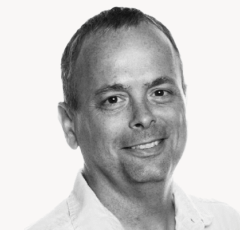As the Vice President of League’s Developer Program, Mark Finkle draws on a deep background in technology and user experience.
Finkle has previously led software development teams at Tumblr, Elastic, Minitab, Enron — and he spent nearly a decade at Mozilla, the Firefox web browser maker, in front-end development and senior engineering management roles.
At League, Finkle leads the program that enables third-party developers, independent software vendors (ISVs) and partners to successfully build on League’s healthcare consumer experience (CX) platform.
I interviewed Finkle about how his background informs that work, lessons he learned in other industries that are applicable to healthcare and how health plans and health systems can leverage developer programs to enhance and accelerate their digital CX transformation strategies.

Putting the consumer at the center of the experience is a good way to start framing some of what healthcare can do with a new CX tech stack.
Mark Finkle
Vice President of Developer Program, League
Q: What out-of-industry lessons have you learned throughout your career that are particularly applicable to healthcare C-suites when it comes to CX?
A: The most important element of CX transformation is really focusing on the actual experience. All too often that is secondary to healthcare apps, but it’s not a healthcare-only issue. Finance is the same way. My banking app is not fun. It’s not something I love to come back to. And from my experience at Mozilla and Tumblr, there are applications that you keep using because you really want to.
That’s what struck me the first time I looked at League’s healthcare CX platform. The experience itself is polished. Design and product teams care about the pixels — our opportunity is to go above and beyond what health plan members and patients typically expect from a health app.
Q: Based on your background, what do other sectors have that healthcare needs to keep pace with?
A: Putting the consumer at the center of the experience is a good way to start framing some of what healthcare as an industry can do with a new CX tech stack. Ask what it takes to put the plan member or patient at the center of the experience instead of being part of a fragmented, disconnected experience.
Putting the consumer at the center sometimes means letting go of features or functionalities you once felt were most important and, instead, focusing on what matters to the end consumer.
Q: How should healthcare executives prepare to leverage developer programs to both transform CX and attain business objectives?
A: Developer programs are a way for health plans and health systems to access many more digital tools than they could possibly build themselves — and with the League Developer Program, that means more options to transform their CX. So right now, healthcare executives should be preparing for that ecosystem of innovation by evaluating the capabilities they currently have, identifying opportunities to integrate disparate point solutions and data sources and understanding how to leverage those to build a more personalized healthcare experience.
Q: How do you envision the ecosystem of innovation shaping the future of CX in the next three to five years? 10 years?
A: Today, many startups simply are not large enough or do not have the population of patients or members to innovate or experiment in niche areas of the healthcare CX — whether it’s meal prep or appointment transportation, or even tools to learn more about a particular medication. There are interesting ideas that can’t find a footing on their own. But with an established ecosystem focused on putting the healthcare consumer at the center of this experience, some of these ideas can now have an audience to determine whether or not they actually make sense in the real world.
The whole goal of an ecosystem is to empower innovators to approach large players as part of a catalog of other innovative ideas that are valuable to their members or patients in a broader experience.
Over the next three to five years, we’re going to see a lot of high impact ideas emerge from developer programs as new capabilities that partners can build into larger solutions.
As we get into that 10-year timeframe, I hope to see more of the long-tail opportunities: ideas that, on their own, don’t create enough impact to warrant building a full-blown application but, because of the ecosystem, can be integrated or embedded into a bigger picture CX. That will lead to innovations and consumer experiences that we would not have even considered in the past.
Q: We announced at League Connect 2023 in February the forthcoming marketplace for partners, ISVs and third-party developers. What’s next?
A: We’re building a foundation that sets our partners up for success. What’s next is making sure that some of the table stakes around a developer program that companies and developers have come to expect from other industries exists in healthcare CX —training and support, peer-based forums for people to be able to ask questions and get help, tutorials.
We’re also expanding the surface area of the League Developer Program. It’s currently easy for a third party to leverage components of our program to build their own unique and great-looking CX based on health data and programs for Android, iOS and web. We’re working to also have data integrations and backend system integrations that enable third parties to expand these CX product capabilities by pulling them in to enhance existing solutions.

State of Healthcare CX 2023
Read top takeaways and key insights from healthcare’s premier CX transformation event.
